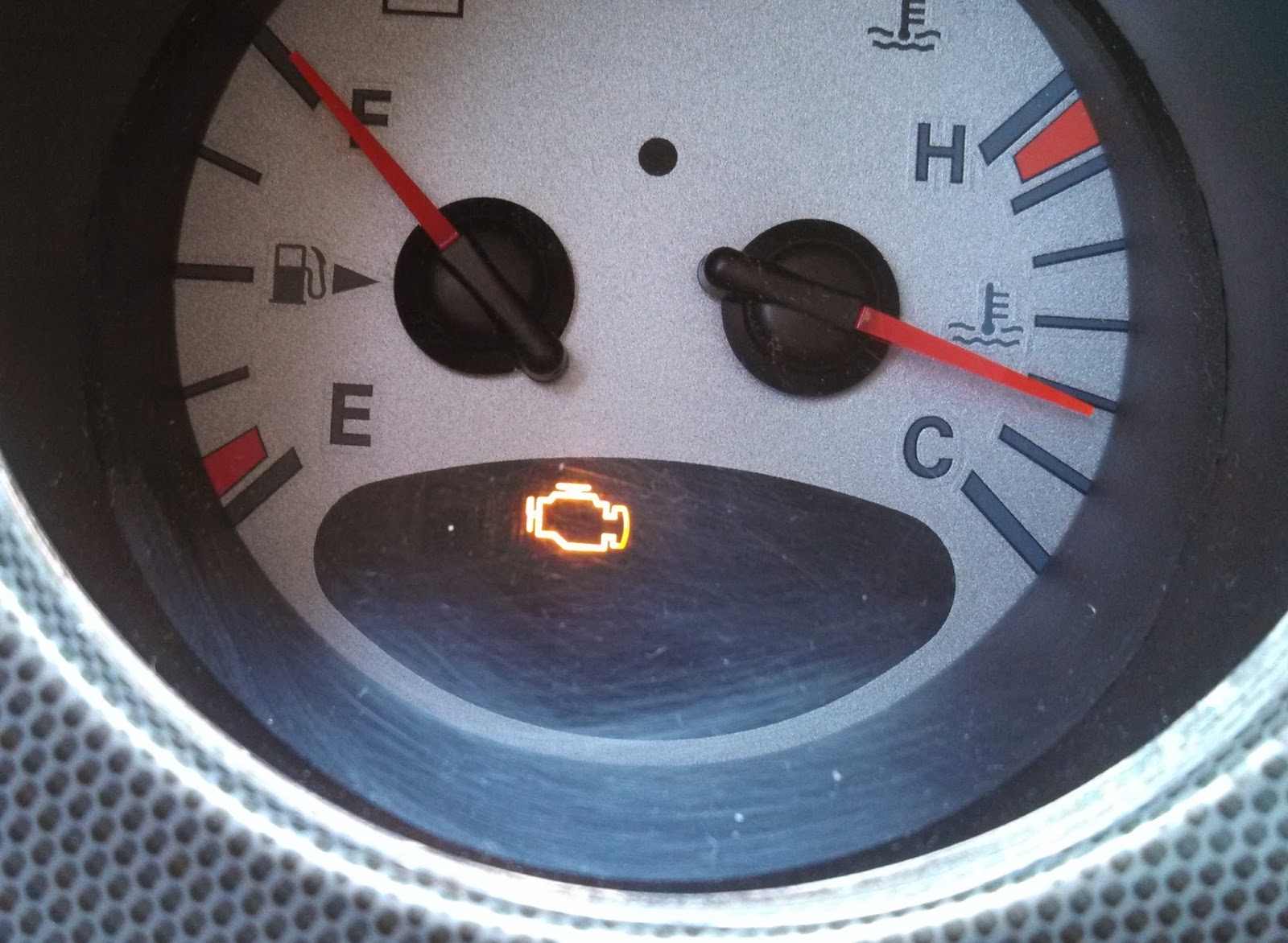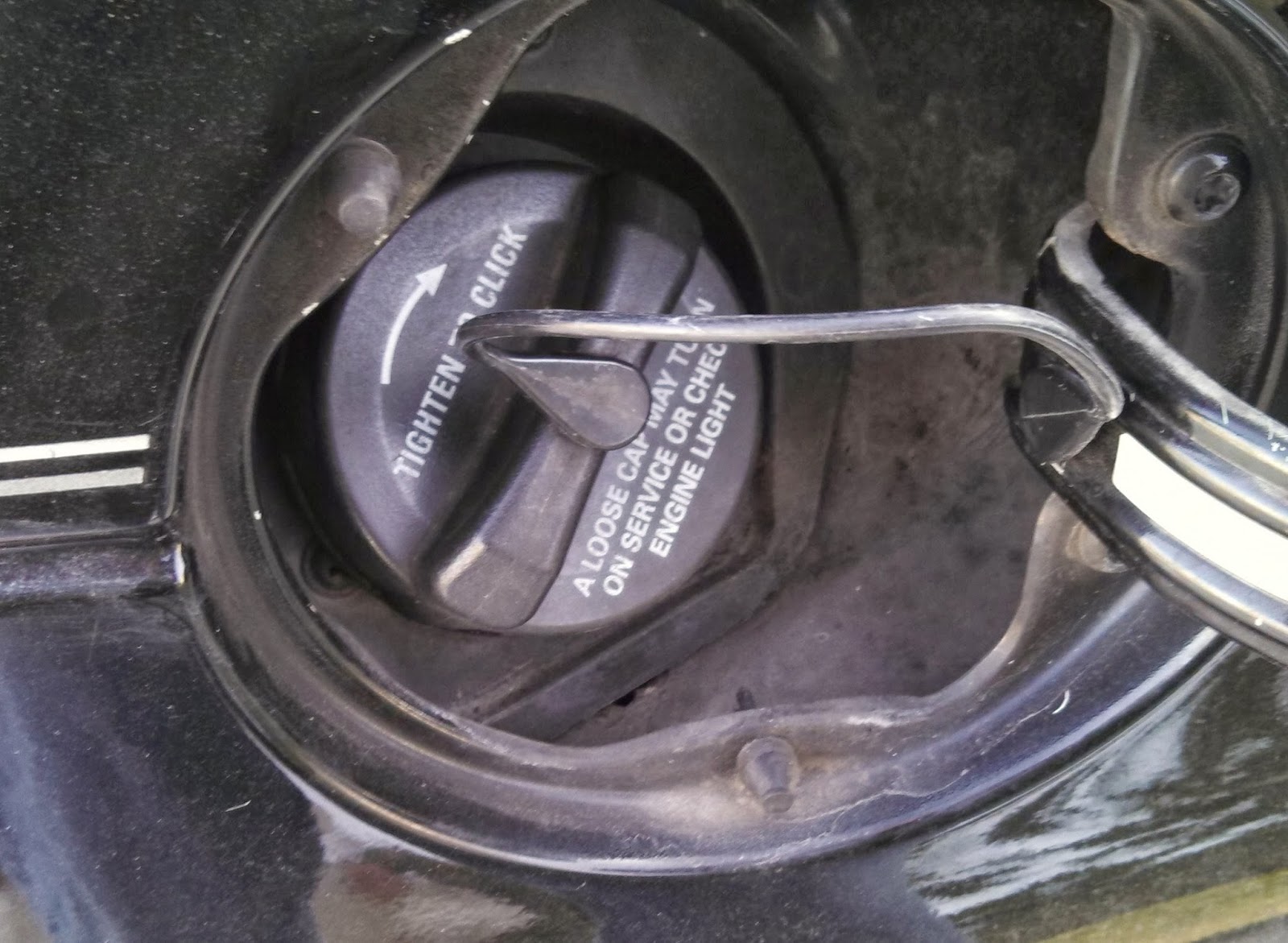That Pesky Check Engine Light? It Might Just Be Your Gas Cap!
Have you ever glanced at your dashboard and seen that dreaded yellow glow – the check engine light? It's a feeling we all know, that little knot of anxiety that something might be seriously wrong with our car. But before you panic and envision costly repairs, there's one surprisingly common culprit you should check first: your gas cap.
It might seem too simple to be true, but a loose, damaged, or missing gas cap can indeed trigger the check engine light. This seemingly insignificant part plays a vital role in maintaining your car's emissions system. It seals the fuel tank, preventing gasoline vapors from escaping into the atmosphere. When this seal is compromised, those vapors leak out, and the car's onboard diagnostic system (OBD-II) detects the problem, illuminating the check engine light.
The check engine light's origin can be traced back to the growing awareness of environmental concerns in the late 20th century. Regulations aimed at reducing vehicle emissions led to the development of sophisticated onboard diagnostic systems. The check engine light became the visual indicator alerting drivers to potential emissions problems, including a faulty gas cap. Understanding the connection between the gas cap and the check engine light empowers drivers to address this issue promptly and efficiently, potentially saving money and reducing their environmental impact.
Addressing gas cap issues is crucial not only for avoiding unnecessary repair costs but also for maintaining your vehicle's overall health and environmental responsibility. A leaky gas cap can lead to wasted fuel through evaporation, contributing to air pollution. Moreover, ignoring a persistent check engine light due to a faulty gas cap can mask other potentially serious engine problems, delaying necessary repairs and potentially causing further damage.
This guide aims to provide a comprehensive overview of how a faulty gas cap can trigger the check engine light, how to diagnose and fix the problem, and how to prevent future occurrences. We'll explore the importance of this often-overlooked component and provide practical advice for keeping your car running smoothly and efficiently.
The system that detects a loose gas cap is part of the Evaporative Emission Control System (EVAP). This system prevents fuel vapors from escaping into the atmosphere. A loose or damaged gas cap breaks the seal, triggering the check engine light.
For instance, imagine filling your tank and forgetting to tighten the cap properly. The system detects the leak, triggering the light. Another example is a cracked or worn-out cap seal, which will have the same effect.
Fixing a gas cap issue can offer several benefits:
1. Cost savings: Replacing a gas cap is significantly cheaper than many other check engine light-related repairs.
2. Environmental responsibility: Preventing fuel vapor leaks reduces air pollution.
3. Peace of mind: Addressing the issue quickly eliminates the anxiety of a glowing check engine light.
Action Plan:
1. Check the gas cap: Ensure it's tightly secured.
2. Inspect the cap: Look for cracks or damage to the seal.
3. Replace if necessary: If damaged, purchase a new cap designed for your vehicle.
4. Reset the check engine light: After replacing or tightening, the light may need to be manually reset or will reset itself after a few driving cycles.
Checklist:
Is the gas cap tight?
Is the gas cap seal intact?
Is the check engine light still on after tightening/replacing?
Advantages and Disadvantages of Checking/Replacing Gas Cap
| Advantages | Disadvantages |
|---|---|
| Inexpensive fix | May not be the actual problem causing the check engine light |
| Easy to do yourself | Requires purchasing a new cap if the old one is damaged |
| Reduces emissions |
Best Practices:
1. Always tighten your gas cap until you hear a click.
2. Regularly inspect your gas cap for damage.
3. Replace your gas cap every few years, even if it appears fine.
4. Don't overtighten the gas cap, as this can damage the threads.
5. If the check engine light persists after replacing the gas cap, consult a mechanic.
FAQ:
1. Can a loose gas cap cause the check engine light to come on? Yes.
2. How do I know if my gas cap is bad? Inspect it for cracks or damage to the seal.
3. How much does a gas cap replacement cost? Relatively inexpensive.
4. Can I drive with a loose gas cap? Yes, but it's not recommended.
5. Will tightening my gas cap turn off the check engine light? It might, but it might take a few driving cycles.
6. What if the check engine light stays on after replacing the gas cap? Consult a mechanic.
7. How often should I replace my gas cap? Every few years is recommended.
8. Where can I buy a replacement gas cap? Auto parts stores or online retailers.
Tips and Tricks:
Keep a spare gas cap in your car for emergencies.
In conclusion, while a glowing check engine light can be unsettling, a loose, damaged, or missing gas cap is often the simplest explanation. This small but crucial component plays a vital role in your car's emissions system and overall performance. By understanding the connection between the gas cap and the check engine light, you can take proactive steps to diagnose and address the issue. Regularly checking and replacing your gas cap can save you money on repairs, reduce your environmental impact, and provide peace of mind knowing you're keeping your car in top condition. Don't underestimate the importance of this simple fix; a quick check of your gas cap could be the solution to that pesky check engine light, allowing you to get back on the road worry-free. Remember to always tighten your gas cap until you hear a click, inspect it regularly for damage, and replace it every few years as a preventative measure. If the check engine light persists after addressing the gas cap, it's always best to consult a qualified mechanic for further diagnosis and repair. By taking these simple steps, you can contribute to a cleaner environment and maintain a well-running vehicle.
The majestic silver fox decoding the allure of actors with white hair and beards
Supercharge your internet top coaxial cables for blazing speed
Transform your family room with an accent wall inspiring color ideas











